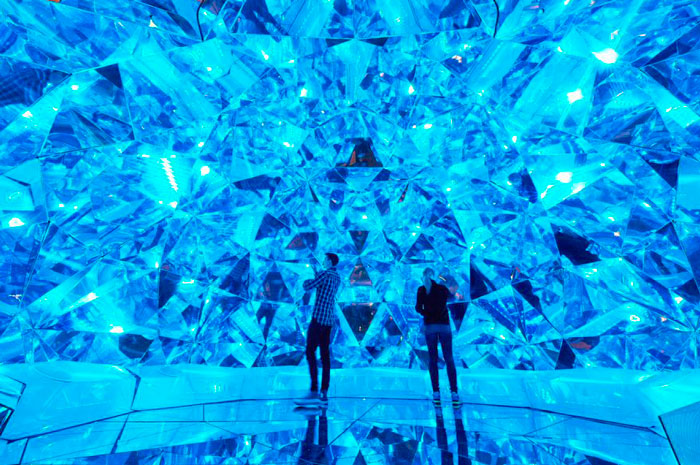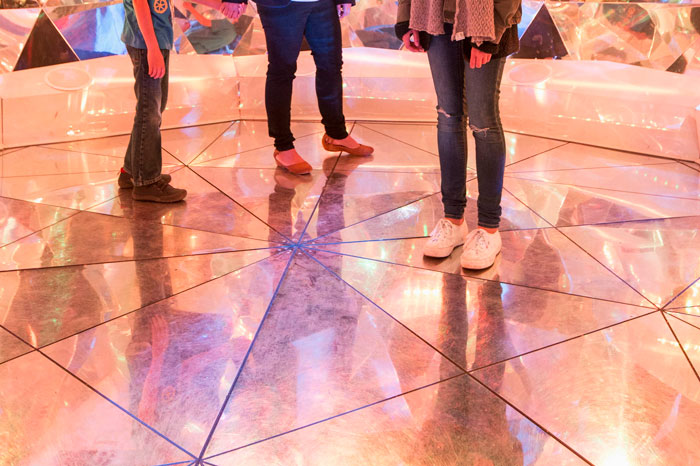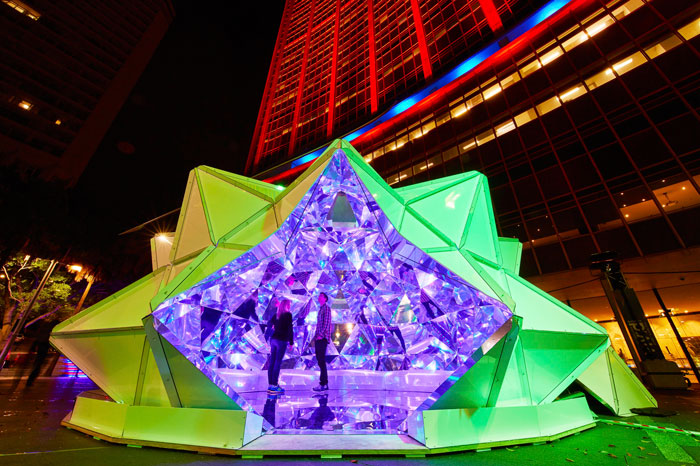This article was originally published on June 2, 2015 but we think it still rocks!
Take a psychedelic trip without touching a tab. Light Origami, by artist Masakazu Shirane, is a walk-in dome that bends and weaves light like paper. The giant kaleidoscope turned rave cave is built from 320 individual Perspex panels that convert movement and color into a space-time experience that changes with each visitor.
Soundtracked by Finnish composer Inge Liljestrom, the work was created for Vivid Sydney and the festival Amplify. It’s part of a series of installations by Tokyo-based Masakazu that riffs on immersive three-dimensional mirrors. Creators caught up with the artist and New Zealand-born project producer Reuben Young to talk about light festivals, Japanese architecture, and taking time out from reality.

Image by Destination New South Wales
The Creators Project: Masakuza, you’re in Tokyo and Reuben’s in Sydney – how did you guys collaborate?
Reuben Young: I actually found Kaz (Masakuza) on the Creators website! I came across his previous work Wink—which he made with [artist and collaborator] Saya Miyazaki for the 2013 Kobe Biennale—on the site and was really inspired by it. So I contacted him and said, “Why don’t we produce a new work for the upcoming Vivid festival in Sydney?” It’s UNESCO’s International Year of Light in 2015 and I thought it would be a great time to bring the work across.
What inspired the concept for Light Origami?
Masakazu Shirane: I am an architect and I wanted to make an interactive space that people could design for themselves. That was my initial idea, and then I devised a 3D kaleidoscope to develop that concept further. For me, it’s an experiment.
RY: We live in such a crazy, busy time where everyone is just constantly thinking and doing. We wanted to create an interactive, immersive space that gave people the opportunity to step into a new dimension—a new realm of experience—to uplift and inspire.

Image by Destination New South Wales
Tell us about some of your other influences. Architecture is key, right?
MS: Japanese architecture is really light-weight, soft and moveable, but the European way is really heavy, hard, and not moveable. I wanted to focus on the Japanese way, and especially on the characteristic of movability. With movability, people are able to make a space bigger or smaller as they want. That’s also why we’ve used the concept of origami. Origami can be a strong structure, and it can be folded. Light Origami is a moveable architecture.
RY: The work is constructed from aluminum composite panels—there are over 320 individual pieces that Kaz has assembled in an origami-like form. The whole structure is very strong, very durable.
What kind of experience do you hope to create for each visitor?
RY: We wanted to create something that inspired a childlike sense of wonder, where people would be able to rethink and reimagine themselves. It’s a chance for people to reflect on the nature of reality and everyday life, to get out of their heads and to look at themselves in a multi-dimensional way.

Image by Destination New South Wales
Find out more about Light Origami on the Vivid Sydney site. The artists would like to thank Vivid Sydney and AMP’s Amplify Festival for making Light Origami possible.
Source Creators
Follow our FB page Lumen




